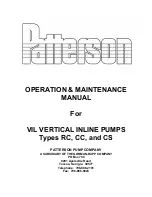
P
P
a
a
g
g
e
e
3
3
6
6
o
o
f
f
3
3
8
8
I
I
N
N
S
S
T
T
R
R
U
U
C
C
T
T
I
I
O
O
N
N
M
M
A
A
N
N
U
U
A
A
L
L
C
C
D
D
N
N
M
M
-
-
s
s
e
e
r
r
i
i
e
e
s
s
C
C
O
O
U
U
P
P
L
L
I
I
N
N
G
G
/
/
D
D
E
E
C
C
O
O
U
U
P
P
L
L
I
I
N
N
G
G
N
N
E
E
T
T
W
W
O
O
R
R
K
K
S
S
(
(
C
C
D
D
N
N
s
s
)
)
S
S
E
E
C
C
T
T
I
I
O
O
N
N
7
7
-
-
P
P
E
E
R
R
F
F
O
O
R
R
M
M
I
I
N
N
G
G
T
T
E
E
S
S
T
T
I
I
N
N
G
G
1
1
9
9
1
1
2
2
1
1
E
E
L
L
T
T
O
O
R
R
O
O
R
R
O
O
A
A
D
D
●
●
S
S
I
I
L
L
V
V
E
E
R
R
A
A
D
D
O
O
,
,
C
C
A
A
L
L
I
I
F
F
O
O
R
R
N
N
I
I
A
A
9
9
2
2
6
6
7
7
6
6
●
●
(
(
9
9
4
4
9
9
)
)
4
4
5
5
9
9
-
-
9
9
6
6
0
0
0
0
●
●
c
c
o
o
m
m
-
-
p
p
o
o
w
w
e
e
r
r
.
.
c
c
o
o
m
m
Rev072518
7
7
.
.
2
2
T
T
e
e
s
s
t
t
P
P
r
r
o
o
c
c
e
e
s
s
s
s
The same Test Generator equipment used for the calibration is used to inject the
RF energy onto the EUT lines under test via the CDN during the test.
S
S
t
t
e
e
p
p
#
#
1
1
With the test setup configured as shown in
Figure 17, and/or as
required by the applicable standard(s), and with the EUT being
exercised as required for the test, set the frequency of the signal
generator to 150 kHz, modulated as required (usually 1 kHz AM @ 80%).
S
S
t
t
e
e
p
p
#
#
2
2
Using the appropriate calibration data/result table for the test level at
which the test will be performed, set the signal generator output to
either
:
a)
the respective
SGout
value determined during calibration for
the present test frequency; or
,
b)
the level at which the power indicated by the power meter is
equal to the respective
FWDpwr
value determined during
calibration for the present test frequency
.
S
S
t
t
e
e
p
p
#
#
3
3
Dwell at the present frequency no less than the time necessary for the
EUT to be exercised and to respond, but in no case less than 500 ms.
S
S
t
t
e
e
p
p
#
#
4
4
Decrease the amplitude by a few dB, then set the frequency of the
signal generator to the next test frequency.
S
S
t
t
e
e
p
p
#
#
5
5
Repeat steps 2 through 5 until the next frequency in the sequence
would exceed the highest frequency of the test.



































